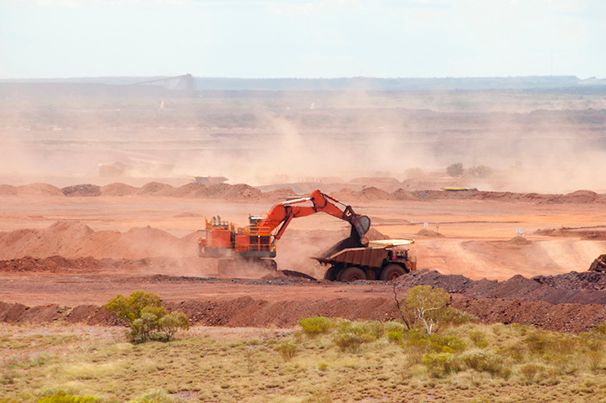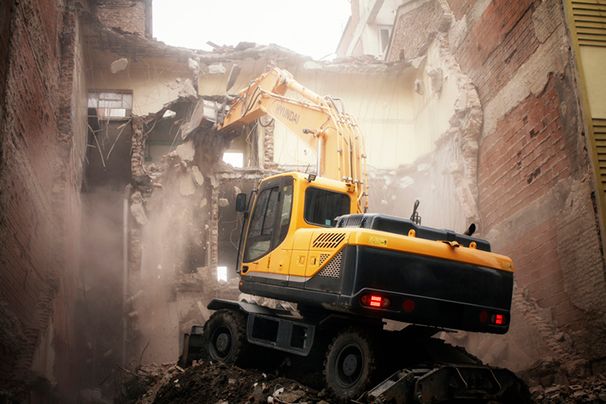Example of managing dust on a mining site
This example of a mining business shows how you can apply the four-step risk management process.
Use the example as a guide only. Managing hazards and risks in your own business may require more detail.
How Samson deals with dust on his mining site

Samson is an environmental site manager with a mining company. The worksite is often dry and exposed, so dust is a common hazard the company must control. Samson knows dust can cause health complications and impact surrounding views, vegetation and land uses.
The site has a buffer zone between dust-generating activities and neighbouring land. Samson’s mining company prevents dust by using clean water to seal and treat onsite roads near sensitive areas like those with protected plants. The company keeps some equipment that generates dust, in buildings fitted with extraction fans.
Samson identified that the dust comes from:
- vehicles travelling on unsealed roads
- drilling and blasting
- vegetation clearing
- stockpiling of soil and rock
- equipment like crushers and conveyers.
Dust controls in the site’s environmental management plan include:
- rehabilitating disturbed areas
- dampening blast areas pre-blasting
- dampening unsealed roads to prevent dust
- covering or wetting loads when moving materials.
Dust-prone roads also have enforced speed limits.
The company monitors weather and is ready to adjust its activities when conditions are dry and windy.
Samson regularly checks and keeps a log of controls and equipment to make sure they’re maintained and working well. He also monitors dust levels near sensitive areas and identifies other present or potential dust sources.
The company adjusts controls depending on their effectiveness, or if onsite conditions change. They register dust complaints, which trigger a review and possible changes to controls and practices.
Samson’s confident the company’s managing risks associated with dust.
Example of managing dust on a construction site
This example of a construction business shows how you can apply the four-step risk management process.
Use the example as a guide only. Managing hazards and risks in your own business may require more detail.
You might also need to engage a suitably qualified person for advice.
How Henry deals with dust in his construction project

Henry works as a site manager for a construction company. He knows it’s important to understand how construction activities can generate dust, as it risks harming people and the environment.
Henry knows demolition, earth works, construction and transport of dirt from vehicles can generate dust. He’s also aware that dust can vary from day to day. It depends on the type, frequency and duration of operations, and weather conditions.
Before starting any job, Henry thinks about how activities might generate dust. He also considers the negative impacts of dust on sensitive receivers, such as neighbours, stormwater drains and local waterways. Henry knows this can result in respiratory issues for people, and poor air and water quality.
Henry identifies controls required to eliminate or minimise impacts from his company’s activities. After this, he knows which operational activities require controls. Henry then puts those controls in place to prevent or mitigate potential impacts.
Dust controls Henry has put in place include:
- windbreaks
- locating machinery and dusty activities away from the site boundary, neighbours, stormwater drains and local waterways
- regularly using water carts and on-tool dust extractors to supress dust.
Henry also monitors the weather. When conditions are hot, dry and windy, he adjusts the site’s work schedule to minimise wind-blown dust.
Henry carries out daily inspections and maintenance to check that control measures are working. He replaces and puts in place extra or other controls if they’re not eliminating or minimising impacts as he intends. Henry checks water carts and on-tool dust extractors monthly. This is to make sure they’re working effectively and maintained to manufacturer’s specifications. Henry records all his inspections and maintenance work.
Henry uses community feedback to help measure the effectiveness of controls. He keeps a log of complaints and, alongside each, he records:
- the date and time
- complainant's details
- description of alleged dust and likely source
- wind direction, strength and speed
- weather conditions.
With these processes in place, Henry’s sure his company's managing dust risks effectively.
Find out more about dust
Reviewed 23 December 2020



